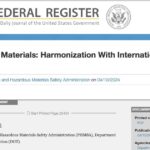Is Ukraine headed for the mother of all hazmat disasters? It’s a question on the minds of some expert observers on the heels of the Russian invasion.
In 1986 it did experience a mother of all hazmat disasters when the Chernobyl nuclear power plant disaster led to countless deaths and illnesses and to the creation of 1,000-square-mile exclusion zone. Chernobyl was near the now-abandoned city of Pripyat in the northern part of Ukraine. At the time of the disaster, Ukraine was still part of the Soviet Bloc.
Prior to the incident, workers were powering down the plant to conduct a test. The power dropped so much that it put the nuclear reactor in an unstable state. The operators continued with their test and attempted a core shutdown. But instead of shutting down, it exploded. Core meltdown, more explosions and an open-air fire pumping out radioactive contamination for nine days.
During the initial emergency response 134 station staff and firefighters were hospitalized with acute radiation syndrome due to absorbing high doses of ionizing radiation. Of these, 28 died in the following days and months; approximately 14 suspected radiation-induced cancer deaths followed over the next 10 years. The number of those who suffered and eventually died from this disaster has never been accurately tallied.
Also read: Major Radiation Near-Miss Inspires Hazmat Training
In 2011 the exclusion zone was opened for tourists to learn more about what happened. And there have been several documentaries on the site and how wildlife is rebounding. You can read much more about the disaster here.
Chernobyl made headlines again in late February when Russian military forces seized control of the abandoned nuclear plant. The International Atomic Energy Agency said they have learned from Ukrainian officials that radiation levels at the site are going up. Some speculate this slight rise is due to military vehicles turning up soil.
Chemical, biological and radiological defense expert Dan Kaszeta in his IFSEC Global article that vehicles kicking up soil could account for the spikes. He also warned of the dangers of fire on the site. Wildland fires, like the one in April 2020 near the site, can suspend radioactive material.
Also read: Firefighting in Ukraine
Nuclear watchdog group CRIIRAD, based in France, issued a warning that Chernobyl contained several sites which were “reservoirs of radiation” that could easily become more problematic if hit by mortars or shells, or if fires broke out in the area.
“Everything must be done to keep their safety devices in operation,” wrote CRIIRAD. The group said it is trying to determine if the elevated levels could have been caused by electromagnetic activity or misrepresented due to cyberattacks.
Kaszeta acknowledges this risk, but cautions that it should be kept in context.
“There’s been no suggestion of any kind of breach in the large concrete sarcophagus that covers the most dangerous parts — the only nuclear reactor core. But it is widely known among us specialists that the broader public generally does not have the background knowledge to accurately assess radiological risks. Studies have shown that people often react to radiological and nuclear incidents by mis-estimating the actual risks and hazards posed by radiation.”
Yet it is not the Russians running around Chernobyl that is keeping many nuclear safety experts up at night. They are worried about the integrity of Ukraine’s other four nuclear power stations — those are all operational.
NBC reports that Ukraine’s four nuclear power plants are on the western and southern sections of the country and have a combined 15 nuclear reactors — and their fuel is said to be more radioactive than was that of Chernobyl.
The on-going fighting brings two concerns to the fore. The first is that weapons will damage the power plants, accidental or intentional. Of course, the sites are fortified. In early February, the head of the utility company that operates the power plants told the U.N. that those plants could withstand an “aircraft crash.”
The second, and arguably bigger, concern is that the war will disrupt the plants’ operations. That could happen if workers are unable to get to the plants due to fighting or even road conditions. There are similar concerns over if fire and hazmat responders could get to the sites quick enough to keep problems from becoming catastrophic if an issue did arise.
The plants rely on electric power to cool the nuclear reactors and keep spent nuclear material stable. If they were somehow cut off from the power grid, things could turn ugly. A meltdown is not out of the question. However, the head of the utility company told NBC that the sites have enough diesel fuel and generators to keep the plants running if normal power sources are disrupted. They also have enough nuclear fuel to operate for two years; Russia is their primary fuel supplier.
Of all the dangerous situations playing out right now in Ukraine, a massive hazmat disaster may not be front of everyone’s mind — but the threat should be given serious consideration.
Original post – Copyright © 2022 HazmatNation.com. Externally linked references may hold their own independent copyright not assumed by HazmatNation











